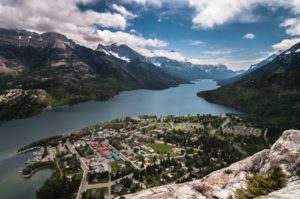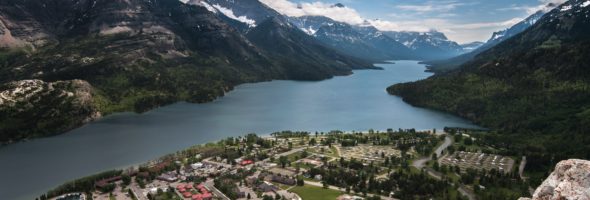Hi didilyho cohortinos!

Here is a PDF link to the Watershed Warriors Grade 6 learning plan:
This learning plan is designed to connect students with their local watersheds and get them thinking about ways in which they can restore the health of these watersheds / protect them from further degradation.
Here is a video describing what a group of Watershed Warriors in Alexandria, VA have started to do in their grade 7 class!:
Title: Watershed Warriors!
Grade: 6
Introduction / Purpose of Learning Plan:
- Students have spent two terms with two classes per week learning about the local watershed
- They have learnt about the ecology of our local waters (i.e. what lives in these waters, what do the habitats of these species look like), and about the biology and behaviours of these organisms (i.e., how do they reproduce? What do they depend on for food and overall health? How do they interact with their animate as well as inanimate environment? This includes both plants and animals)
- From there, they have learnt how to distinguish between a healthy and an unhealthy habitat
- They have learnt about past ecology (what used to live in these waters but perhaps does not anymore and why)
- They have learnt about the impacts of human activities on the watershed (i.e. pollution from fertilizers, pesticides, herbicides, oil, and other toxins. How urbanization changes watershed and groundwater by increasing hard impermeable surfaces and introducing sewers that facilitate runoff. Over-fishing? Industrial activity?)
- They have studied the laws of gravity and motion, and how those laws impact how pollutants enter our waterways.
- Students have explored environmental activism in a diversity of modes and have identified ways that environmental activism may contribute to a healthier watershed.
- Students will now, in the third term, take a field trip to SṈIDȻEȽ (pronounced sneed-kwith) “The Place of the Blue Grouse”, also known as Tod Inlet and will learn about how the old cement plant and how the butchart gardens impact that watershed. They will also learn about the actions of community members who are working to restore that ecosystem. In particular they will hear from representatives of SeaChange Marine Conservation Society, and maybe, if they are lucky they will hear from Earl Claxton Jr., an elder from the Tsawout community who has grown up in that area, has heard stories told to him by relatives who know how the inlet used to be, and who has seen how it has changed to where it is now. They will hear their stories and will begin to generate ideas about what project they might collaborate on or spearhead in order to give back to the lifeblood of Mother Earth (the waterways).
- Students will have two classes per week for five weeks to develop and implement their Watershed Warriors Action Project. During this time, they will receive support and feedback from teachers, their peers, and invited guests (e.g., representatives from World Fisheries Trust such as Yogi Carolsfeld who is the Executive Director of WFT and who has spearheaded the Seaquaria Ocean Education program). These distinguished guests will come in to speak to the class about the importance of a healthy watershed and the different initiatives that are already in motion in the community. Another great organization – although based in the United States but has some great resources for educators and students around environmental community action – is Earth Force. Check them out, they are amazing! They highlight how curriculum can still be addressed while allowing student’s voices to be front and center. Teacher can also draw on students’ funds of knowledge and bring in members from their networks of relationships who may have something to contribute to their learning as it relates to this learning plan.
- Learning plan culminates in a Watershed Festival – a space where students can share their Watershed Warriors Action Projects (WWAP) – a multimodal project that seeks to address a need of their local watershed. This can be done in the format of their choosing. Some suggestions are a poem, a video, a poster, a story, a podcast, a blog, music, an activity, an art piece, a restoration project, a letter to council/government, documentation of a student-led initiative, the list goes on. In this way students will gain knowledge through real life experiences that help contribute to the betterment of their community and local waterways.
Big Ideas (2-3):
- Newton’s three laws of motion describe the relationship between force and motion.
- Multicellular organisms rely on internal systems to survive, reproduce, and interact with their environment.
- Everyday materials are often mixtures.
Curricular Competencies (3-4):
- Contribute to care for self, others, and community through personal or collaborative approaches
- Identify questions to answer or problems to solve through scientific inquiry
- Experience and interpret the local environment
- Identify First Peoples perspectives and knowledge as sources of information
Content (2-3):
- This learning plan will allow students to explore and understand:
- The basic structures and functions of body systems, including First People’s understandings of body systems in humans and animals:
- Excretory
- Reproductive
- Hormonal
- Nervous
- Heterogenous mixtures:
- Suspensions (e.g., salad dressing)
- Emulsions (e.g., milk)
- Colloids (e.g., aerosols)
- Force of gravity:
- The force of attraction between objects that pulls all objects towards each other
- On Earth, gravity pulls objects toward the center of the planet
- The basic structures and functions of body systems, including First People’s understandings of body systems in humans and animals:
Environment:
- Students take a field trip to SṈIDȻEȽ (pronounced sneed-kwith) “The Place of the Blue Grouse”, also known as Tod Inlet. They are encouraged to start thinking about what sort of project they would like to work on (either individually or as a group).
- For the first three weeks, the two lessons per week will be split with one indoor and one outdoor lesson where they can make observations about a nearby creek or aspect of their watershed. These first three indoor lessons will happen in the library, where focused and supported work can occur, through reading about different topics of interest relating to watersheds. Members of the community will also be invited to speak here in these first three weeks. Then the last four lessons over the remaining two weeks will happen in class at the tables. This will be the time for students to put together their projects, ask peers and teacher for help, and prepare for their Watershed Festival Presentation.
- Watershed Festival will take place outdoors (preferably by a river somewhere – accessible to all) and at the end of the school year in June.
Curricular Integration:
- This lesson, although based in science, relates as well to social studies as we are learning about human interactions with and influences on local watersheds.
- We will also be incorporating the First Peoples Principles of learning
- We will learn about the relationships of reciprocity that local indigenous peoples have held with the land and waters since time immemorial – draw inspiration on their worldviews to help re-imagine the dominant story we as a society have been telling over the past 200-150 years or so.
- Depending on the direction in which the students take their WWAP, there may be an integration of the arts education or the applied design, skills, and technologies curriculum.
- Integration of mathematics in such things as measuring and determining the rate at which the river flows at different points in the year, estimating numbers of salmon and other species in the waters, projecting how a restoration of habitat can influence future population levels of salmon and other species.
Materials:
- Books on watersheds, on groundwater, and aquatic and terrestrial species that all depend on the waterways in some shape or form. Work with Librarian on this front.
- Chrome books, or computers if possible. To help support students in their investigative inquiries.
- Rite in the Rain notebook for each student so that they may make observations, calculations, and notes while out in the elements
- Open Reel Tape Measures to help students make calculations such as flow rate of the river.
- Power extension cords and possibly a power generator to be used at the Watershed Festival to help students who need electricity for their presentations.
- Tarps and rope for the Watershed Festival in the unlikely case that it rains on that day in June.
- Lanterns for the Watershed Festival to help add to the magical atmosphere that will indubitably be present.
Adaptations:
- Using principles of universal design
- Giving students choices all along the way
- Finding out what student’s interests are and working alongside them to find ways to link their interests to healthy watersheds
- Provide an interactive visual calendar for each day as well as being transparent with the entire process right from the beginning. Students should know what is expected of them and should always be aware of the next steps in the process.
- Offer a variety of resources and modes of instruction that tailor to individual student needs. Maybe that means having books and other resources for a variety of sensory abilities. This is about knowing your class and finding ways to ensure that all students receive an enriched experience.
- Giving students choice if they would like to work collaboratively or individually
Extensions:
- One extension would involve going beyond the framework of the Watershed Festival and finding a way to bring your project/idea/passion to your local community in a way that helps make concrete steps towards a healthier watershed.
- Students can contact members of government in hopes of enacting change. Students can hold protests and share their knowledge with the greater public community.
- Students can reflect on their own work and / or the work of their peers. Noting what worked well, and what the next steps might be.
Assessment:
- to plan for students and ensure they are meeting their potential
- to identify where the program and environment might be adjusted to meet individual needs
- to share appropriate information with students, families, and other school personnel

